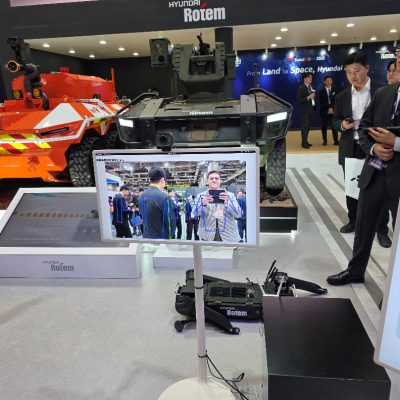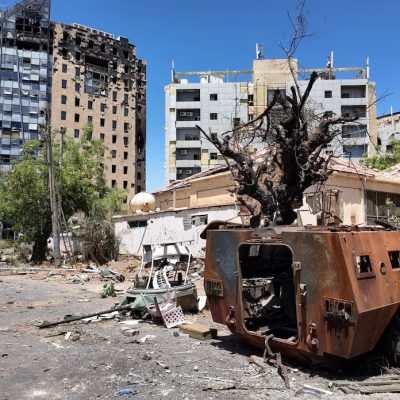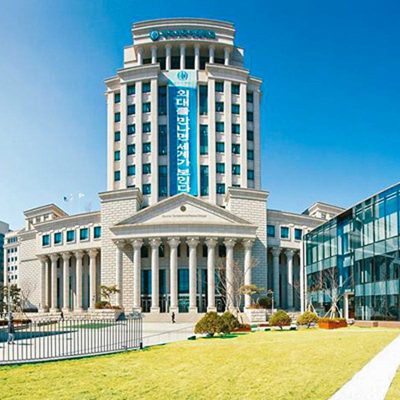Prof. Marc Lavergne, Senior Research Fellow, National Center for Scientific Research Middle East/Horn of Africa, University of Tours, France
First lecture;
ROLES and IGSDA online seminar, Friday, 22-01-2021. ‘New Great Game for the Red Sea and the Horn of Africa: RCAST Security Webinar Series #1’
University of Tokyo
Introduction:
Another Africa, deeply rooted in History, both entrenched in its highlands and widely open to the outer world through its extensive seashores along the Red Sea and the Indian Ocean
A wide diversity of peoples and civilizations, which flourished on long distance trade with the East and the West, but prone to endless feuds among tribes and clans, and wars against foreign interference.
Today, modern States are at pain imposing their rules and giving each group its part within nation building and are easily at odds with rivals. So as their economic development is still at the first steps, the sheer political construct of these nations is still shaky and threatened both internally and externally.
1. A strategic location since the early ages
Eritrea, Ethiopia, Puntland: these modern names reflect the ancient prominence of the Horn of Africa: the country of Punt was visited by the ships of Queen Hatshepsut of Ancient Egypt, long before the Queen of Saba’s visit to King Solomon in Jerusalem gave birth to the Ethiopian dynasty. The Empires of the Horn of Africa, linked to those of Yemen, flourished on trade of precious goods, part of them imported from India and the Far East.
Arabs and Portuguese were unsuccessful in trying to dominate the Horn, until the opening of the Suez Canal in 1869. The British, French and Italian rushed to establish ports on their sea lanes to India, Indochina and the Far East, without being able to encroach on the Highlands.
New concerns added attractiveness to these shores, mainly the discovery of the Arabic peninsula oil fields, and the need to ensure the safety of the tankers.
2. A physical and human diversity, cause of permanent tensions.
- Coexistence of two worlds: the Abyssinian Highlands are surrounded by desert coastal plains. Opposition between Christian sedentary farmers and Muslim nomadic herders, the first one organized under kings with central administration, the latter between independent and warlike tribes and clans: a land with few cities, except the ports founded and populated by foreign traders.
- A variety of modern institutional settings: Somali peoples under various colonial rules seem to long for unity, but on the contrary divided themselves into smaller unstable units: The Federal State of Somalia, including quasi-independent Juba land and Puntland ; Somaliland, independent but without international recognition (except Taiwan recently) ; Ethiopia, since 30 years an Ethnic Federation for its ca. 80 ethnic groups ; Djibouti , where the Issa gained the upper hand on their Afar rivals ; Eritrea, which did not recognize Ethnic groups, but instead ten national languages. . All these systems are unsatisfactory, they create frustration, hatred and permanent instability.
- Hostility and distrust are the rule between seaside and mountains inhabitants, but they are all linked by a vital interdependence: the coast with its harbors and traders, is a window to the external world for the highlanders
3. Instability as a basis of social interaction
Modern political structures seem artificially superimposed on social relations:
- On the border plains, nomadic tribes and clans were competing for water and pastures and for the control of ports and land routes to the interior, while in the highlands, kings and princes were competing for the control of the peasants and of trade routes to the coast, towards the Arabic peninsula or the Nile valley.
- Dominant groups base their supremacy on history, on demography, on skills or military efficiency: in Ethiopia, the Amhara has been seen for centuries as the ruling aristocracy, before being replaced in 1991 by the Tigrean People’s Liberation Front until 2012-2018. Those were then sidelined by a coalition of Amhara (30%) and Oromo (45%) parties, usually at odds to each other. Situation is presently very volatile, and the central government seems unable to restore peace between communities in several parts of the country, after its military operation to destroy the TPLF’s rear base in Tigray.
- In Eritrea, it may be assumed that better educated and by Italian colonizers privileged clients, the Tigreans, held major power positions than coastal Muslims;
Issa’s in Djibouti have regained the upper hand after independence on the Afars which were closer to the French administration.
In Somaliland and in the Federal State of Somalia, the same hierarchy of trbes and clasn apply, while the country is supposed to be the homogeneous home of all Somalis, whether Hawiyé, Marehan, Darod, etc.
4. Present stakes to be confronted:
The Horn of Africa is thus still a shaky and unstable area, due to internal factors as much as to external influences and rivalries. Those might be either inflamed or weathered by foreign interference, but no external intervention can be seen as able to control internecine rifts or to impulse dynamics..;
Some of the pressing stakes can at least be listed:
- Eritrea: the “Red Sea’s North Korea”. What after the sidelining of the narrow and ageing ruling group?
- Djibouti: What project for what nation? Or how to reconcile the two main communities?
- Ethiopia: Unity at stake: which way out from Ethnic Federalism?
- Somaliland: Statehood’s recognition at last: Gaining external supports through cautious leadership.
- Somalia: Rein in the clans to build a Nation? What power sharing between central State and autonomous regions?
5. Economic development challenges
- No mineral wealth (volcanic soils on the African Rift); oil and gas sources of hopes and tensions (Kenya/Somalia border contest on sea waters; Gas feeder from Ethiopia to Djibouti);
- Hydropower as the key to progress and prosperity: at what cost? To what effect? Downstream countries interests: which way to Nile basin cooperation?
- Agricultural development, a source of ethnic tensions and confrontations (Western Ethiopia and Sudan); The effects of climate change (El Nino) on traditional farming and herding communities: Droughts, famine, tribal conflicts, maritime piracy,…
But:
- An opportunity for investors: cheap and hardworking labor, an alternate to rising labor costs in Asia.
- A huge need for infrastructural investments: hydro power, roads and railways networks….
- An international competition for access and control through ports, from Port Sudan to Kisimayo.
- A gateway to Africa? Addis Ababa, capital of African Union. Ethiopia only African country which resisted colonization: but no sense of belonging to the Black continent.
The Sedan, from the Red Sea to the heart of Africa
- A crossroads of peoples and civilizations
- Political geography: A huge country, from the desert in the North to the Savanna and in the South, to the tropical forest. River Nile and desert roads to Egypt, through the Red Sea to the Hidjaz.
- East-West: along the Sahelian belt, from the Atlantic to the Red Sea – and the Holy cities
- Transition between the Arab World and Black Africa: a unsolved identity problem.
- A Land of diversity and freedom, structured by Merchant routes and sultanates
- Since Egyptian and British colonization, a dominance of the Arab-Muslim Culture on the African element.
- A frustration that led to a 50 year revolt of the South, for equality, but ended with independence, at the US request.
- And an upheaval of Darfur and other marginalized areas, Muslim, but African by culture and neglected by the Arabized Nile tribes. No final settlement yet. A likely cultural and political revolution with the margins subverting the center.
- A resource based on oil, since the 2000, cause for more devastation. Now replaced by Gold, captured by armed groups with no benefit for the State. south trying to reach Europe for a better life, through Libya.
- A greed by foreign investors for land and water resources, at the expense of local population tensions and revolts.
- The South, long devastated by a 50 year long civil war, soon became ravaged by feuding political leaders, reviving tribal and ethnic rifts. No other resource than the oil exports, through Chinese, Malaysian and Indian companies.





